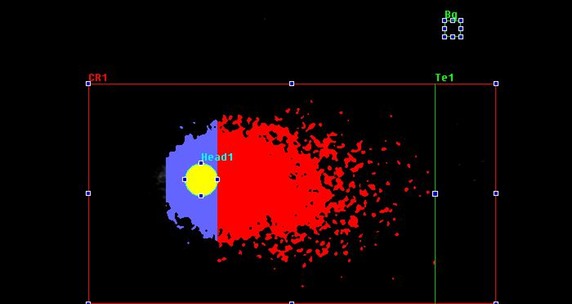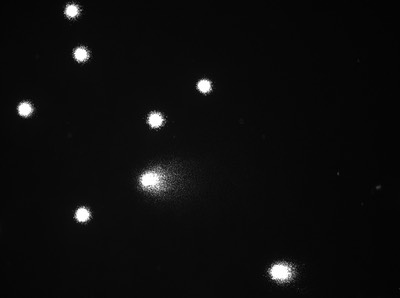
Sperm provide half of the genetic material to the embryo. The father’s (paternal) DNA is susceptable to damage due to inflammation, chemotherapy, environmental exposures, laboratory processing, and other conditions. Sperm with damaged (broken) DNA are still able to fertilize an egg. The embryo can develop for up to about 5 days, dividing and even forming a blastocyst (the stage that implants into the uterus) before the paternal DNA becomes necessary for further development. At right, normal, undamaged sperm DNA.
Eggs are very competent at repairing damaged DNA (from the sperm or egg), but the amount and type of damage can be too much for these repair mechanisms. Single-strand breaks in DNA are most easily repaired, since the unbroken strand is a template. But double-strand breaks need to be repaired at exactly the right spot in the DNA. Double-double-strand breaks are the worst, since these are small pieces of double-stranded DNA that could be re-inserted in the wrong place, in the wrong orientation, or not at all. This can lead to early embryonic death or serious genetic problems.
ASSAYS: NEUTRAL COMET and ALKALINE DNA DIFFUSION

Several different assays of sperm DNA fragmentation are available in different labs. The Sperm Chromatin Structure Assay specifically measures single-strand breaks. The TUNEL assay detects breaks on one strand, and can not distinguish between single- and double-strand breaks. We use the COMET assay, which offers more types of measures of DNA damage than any other test, in particular, double-double breaks. We also test for latent damage by comparing DNA fragmentation under neutral (natural) conditions to that under stressed (alkaline) conditions. Some data suggest that especiially the stressed damage correlates closely with pregnancy and early embryonic loss.
The image above shows digitized sperm DNA spread out from the center (yellow) to the “Comet tail” in red. The small red dots to the right are double-double breaks.

